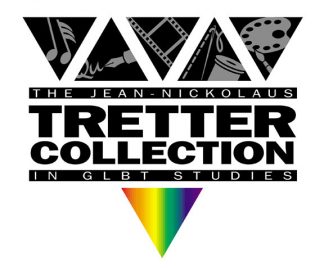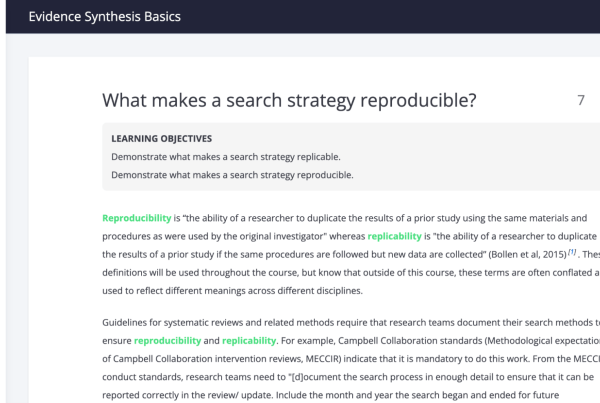By Adria Carpenter
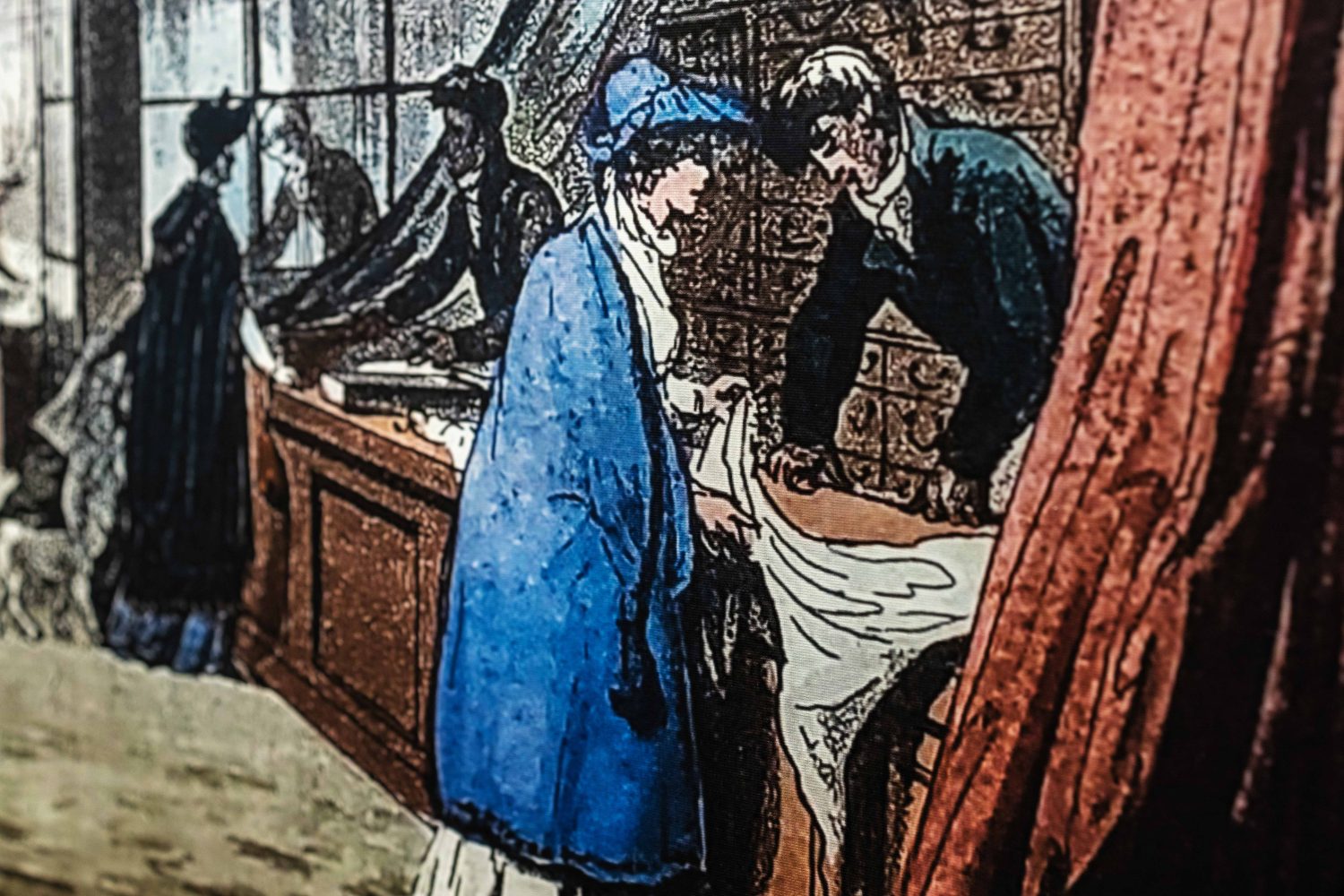
A painting of a fabric store at the “Connecting Threads” exhibit, photographed on May 23, 2023, at the Elmer L. Andersen Library. (Photo/Adria Carpenter)
Anne Good, the Assistant Curator at the James Ford Bell Library, has unveiled her first exhibit since joining the University of Minnesota Libraries in 2020.
“Connecting Threads” showcases the tactile culture of the premodern world — its textiles, fibers, and fashion, its economy and trade markets — and asks what our clothes say about the modern era.
Originally, the exhibit was going to be a pop-up display that would explore what people wore around the world, but over the last year, Good centered on the different types of textiles that were traded in the 17th and 18th centuries.
“Even though it’s got tons of stuff in it, it only scratches the surface of what we have in the collection. And the idea with exhibits is always to try to lure researchers in,” Good laughed. “I’m quite happy with the way it turned out.”
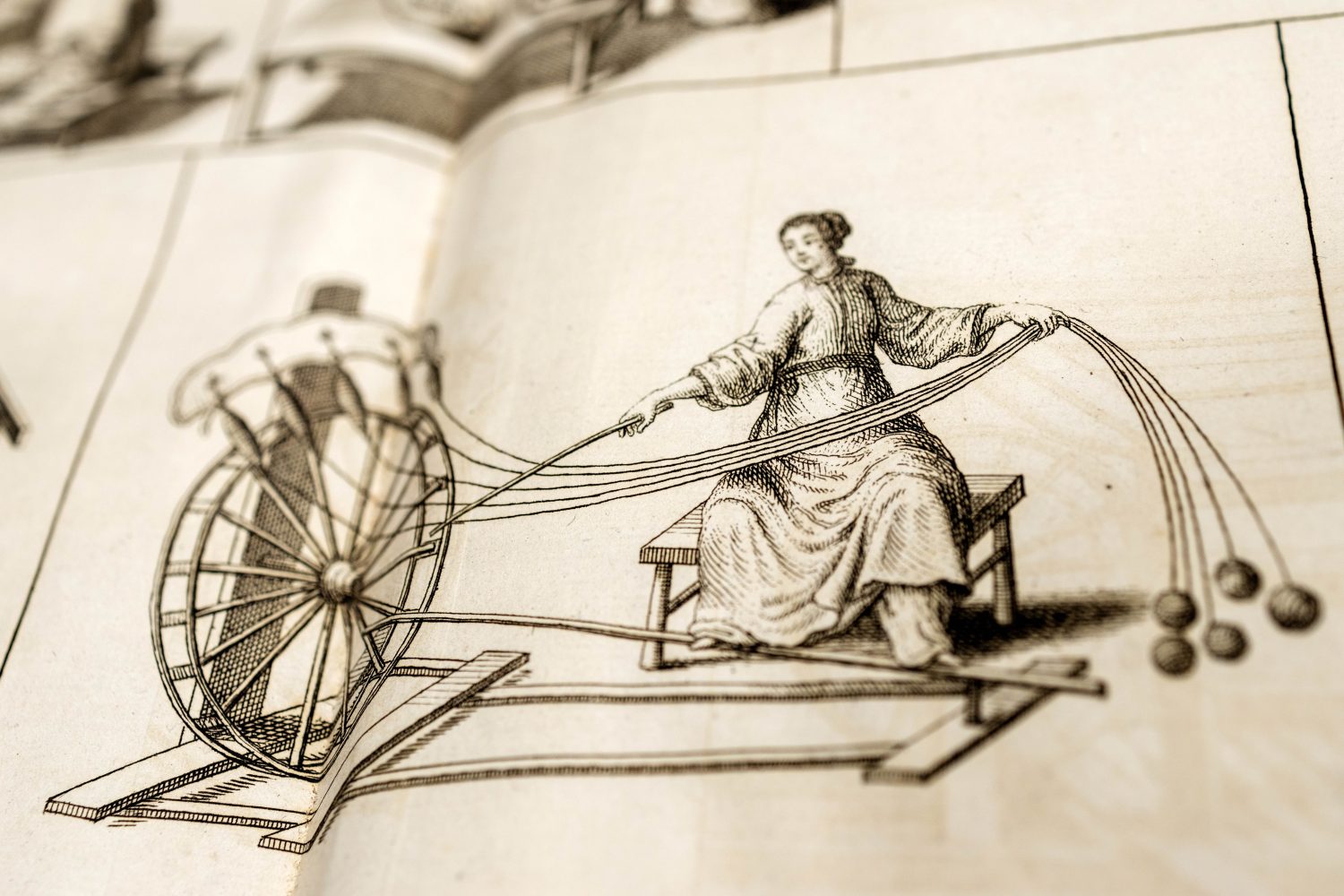
A book displaying silk production at the “Connecting Threads” exhibit, photographed on May 23, 2023, at the Elmer L. Andersen Library. (Photo/Adria Carpenter)
Good and her intern Anya Badaldavood began their research with a book filled with bark cloth samples — made by beating strips of fibrous inner tree bark into sheets — that were gathered during the three Pacific voyages of Captain James Cook, the British Royal Navy officer who was eventually killed by native Hawaiians (when he attempted to hold King Kalaniʻōpuʻu-a-Kaiamamao hostage).
“That book is one of the most fascinating items in the collection to me personally, and I see it not just as a record of a voyage that happened, but instead it’s as though you can reach out, and you can touch history. It’s a tactile connection to the past and to these specific stories,” she said.
The tactile element is a recurring theme of the exhibit and connects to “Sensory History,” an academic field that looks at how the senses shape people’s experiences and perspectives.
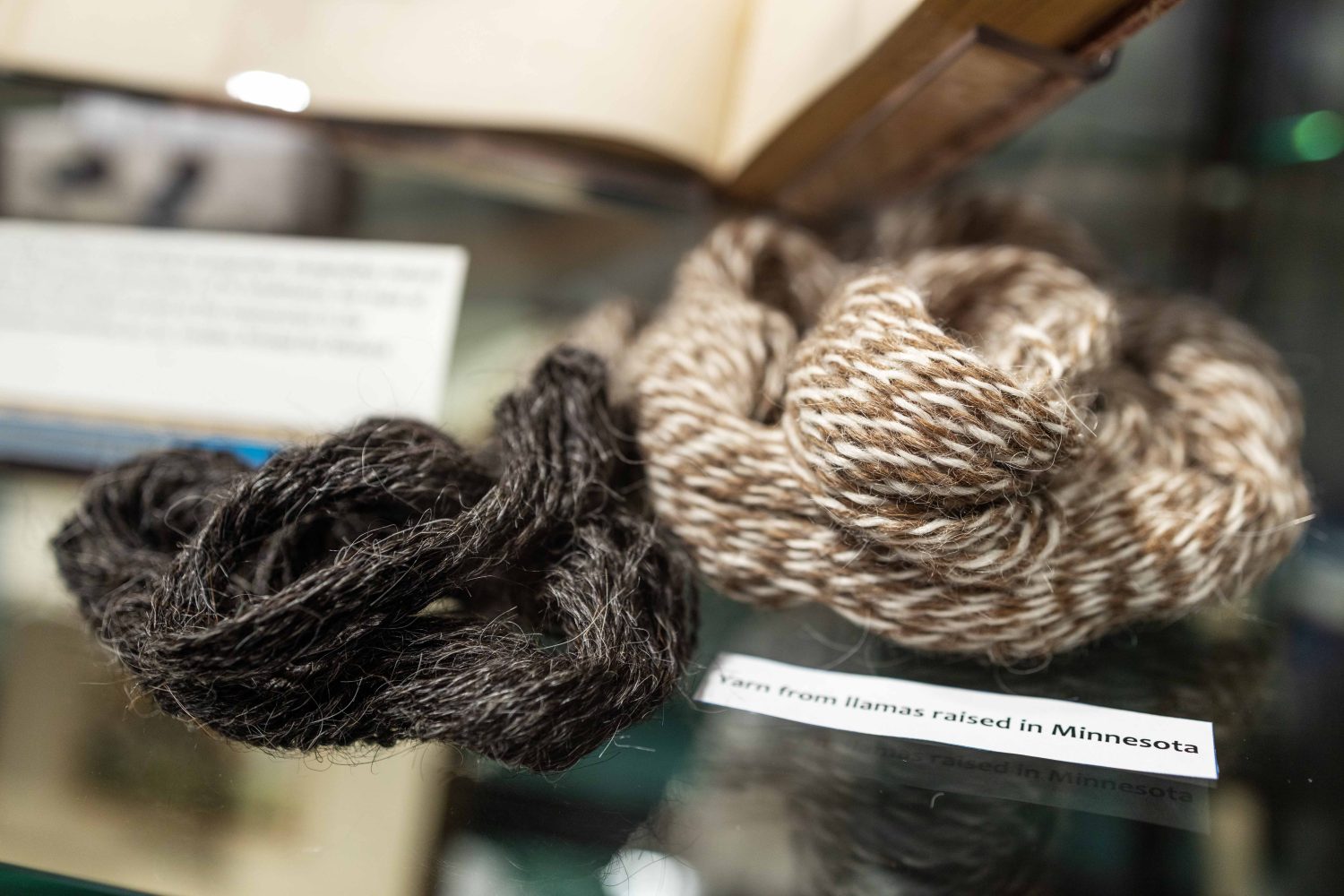
Yarn from llamas raised in Minnesota on display at the “Connecting Threads” exhibit, photographed on May 23, 2023, at the Elmer L. Andersen Library. (Photo/Adria Carpenter)
Another dominant theme is the textile economy, from the production of different fabrics and dyes, to the advent of globalization and ever-expanding trade markets. While colonial powers in Europe used unfair trade agreements and military force to extract the wealth of other nations, some pamphleteers criticized the British East India Trading Company and its importation of Indian cotton, fearing it would destroy domestic textile production.
The same economic anxieties are still prevalent in the 20th and 21st centuries, Good explained, as we debate the pros and cons of globalization, or business models like “fast fashion,” which mass produces cheaply-made, inexpensive clothes that align with the latest, fleeting trends.
“I see parallels between this story here and our story here in the world in which we live, and I find that really fascinating,” Good said. “I want that connection to be made. I want people to think about where your clothes come from, how that affects the rest of the world.”
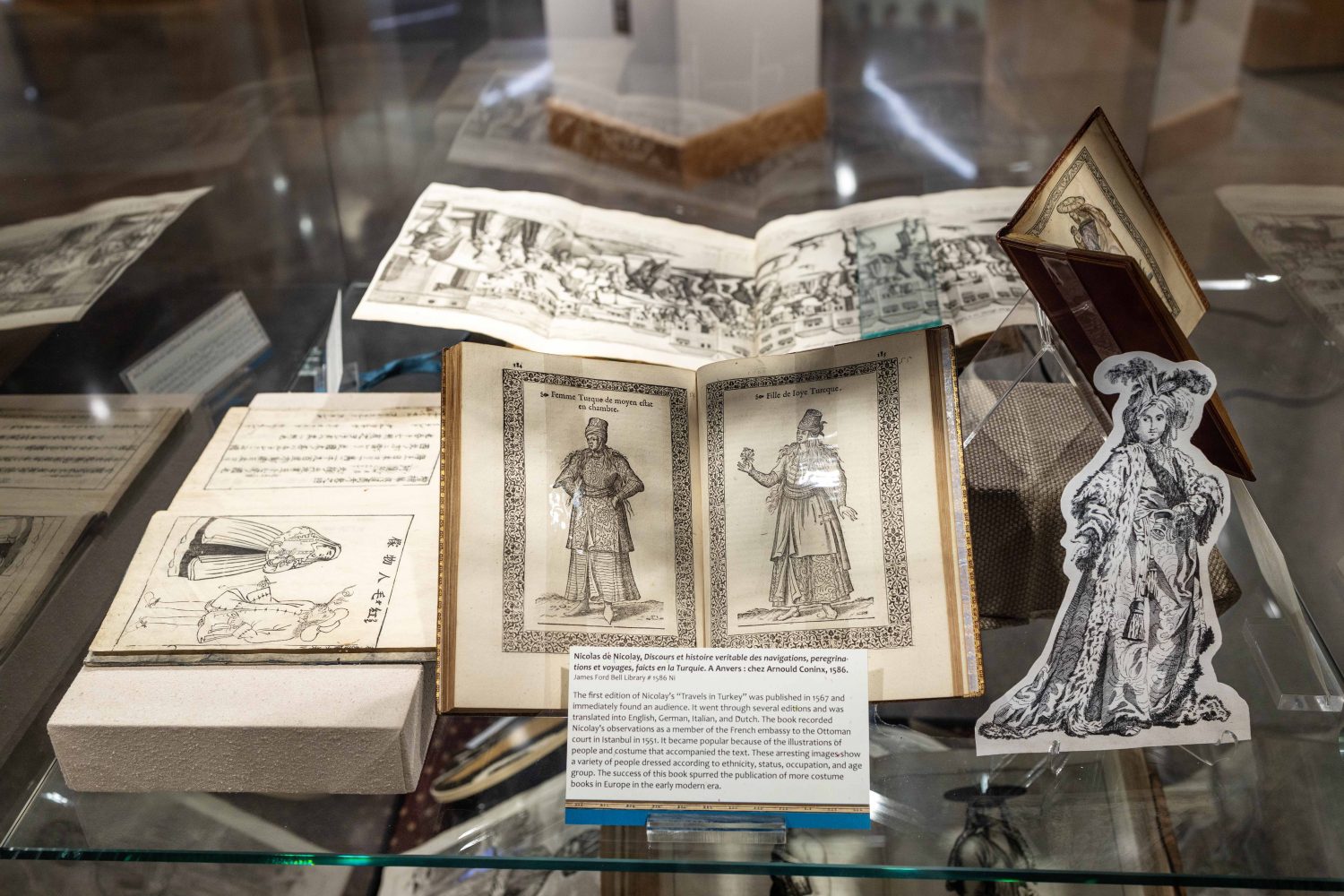
Throughout the exhibit are cutouts featuring fashion from around the world, which originate from the books in this display, photographed on May 23, 2023, at the Elmer L. Andersen Library. (Photo/Adria Carpenter)
The exhibit also models the role of clothing in forming identity. Clothes in the premodern often marked a person’s economic or social status. Wealthier people bought more expensive fabrics and dyes to signal their social status (and the same trends are common today, like the “old-money” and “quiet luxury” aesthetics). Clothes also delineated a person’s gender role, national identity, and personality. Some books in the exhibit would conflate these different identities to stereotype people from other cultures, dictating how they were supposed to look.
“Connecting Threads” will run throughout the summer until Aug. 31, 2023. Visit the displays at the Bell Gallery in the Wallin Center, on the ground floor of the Elmer L. Andersen Library. The exhibit is open during regular library hours, 9 a.m. to 5 p.m. Monday, Tuesday, and Friday, and 9 a.m. to 7 p.m. on Wednesday and Thursday.
“The exhibit showcases a very human side of the holdings in the Bell Collection,” Good said. “I really like the way it turned out.”
Exhibit details
What: Connecting Threads: Textiles, Trade, and Attire in the Premodern World
When: May 15 through August 31, 2023
Where: Wallin Center, Bell Gallery (ground floor) at Elmer L. Andersen Library | Open during library hours (9 a.m. to 5 p.m. on Monday, Tuesday, and Friday; (9 a.m. to 7 p.m. on Wednesday and Thursday) | Parking and directions



